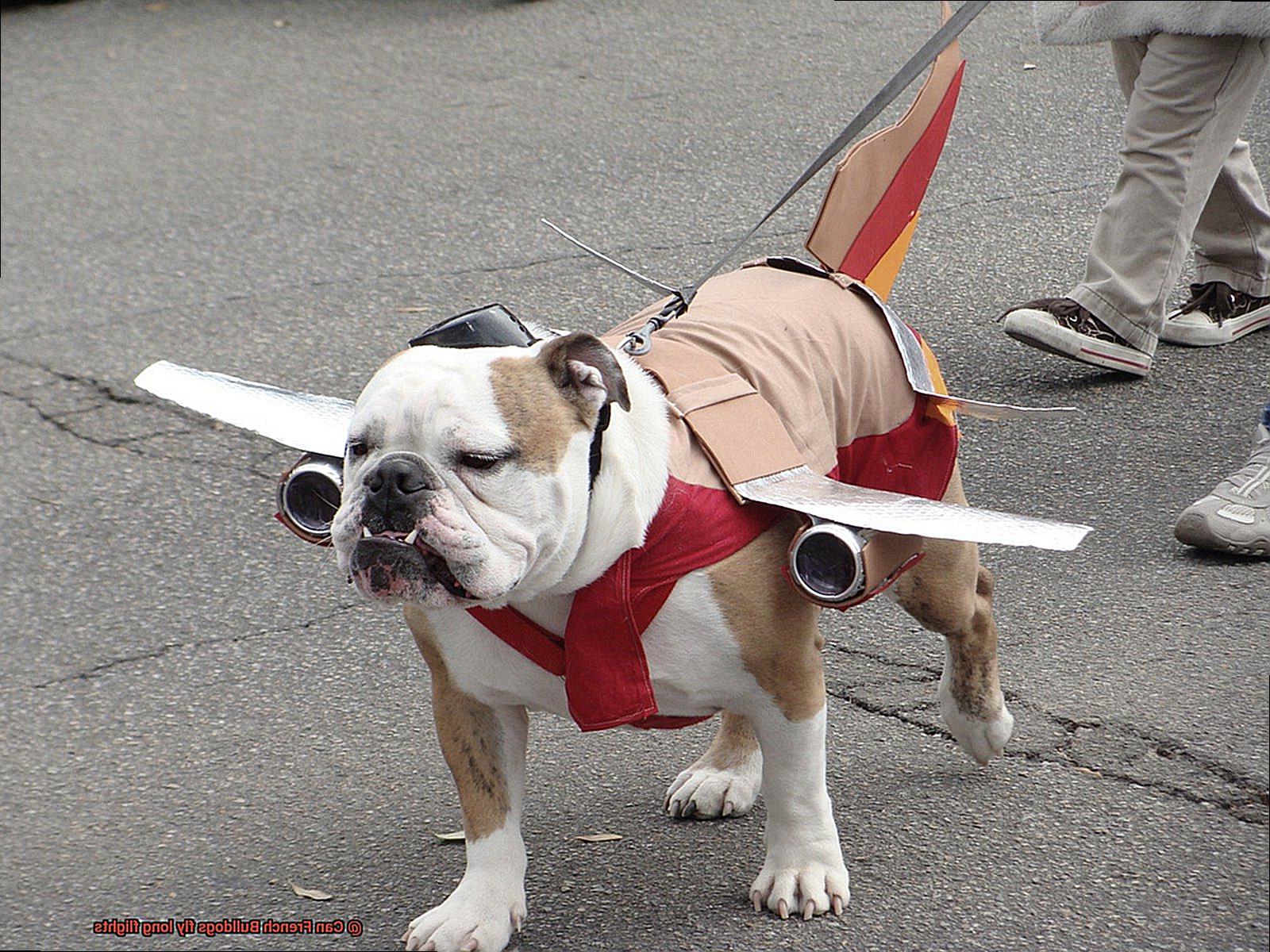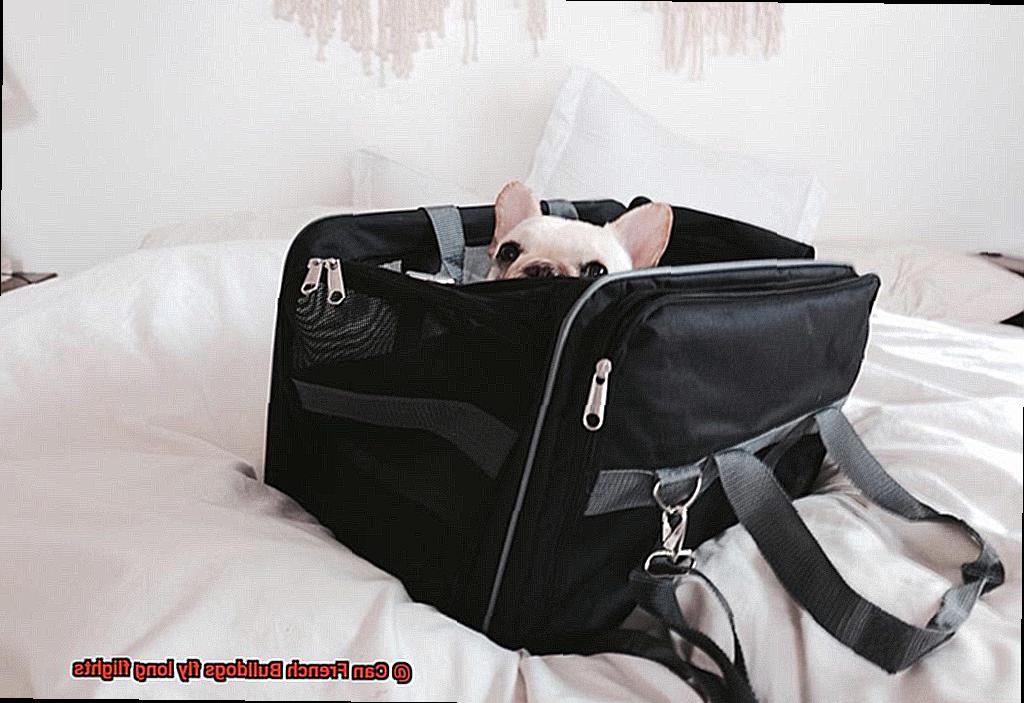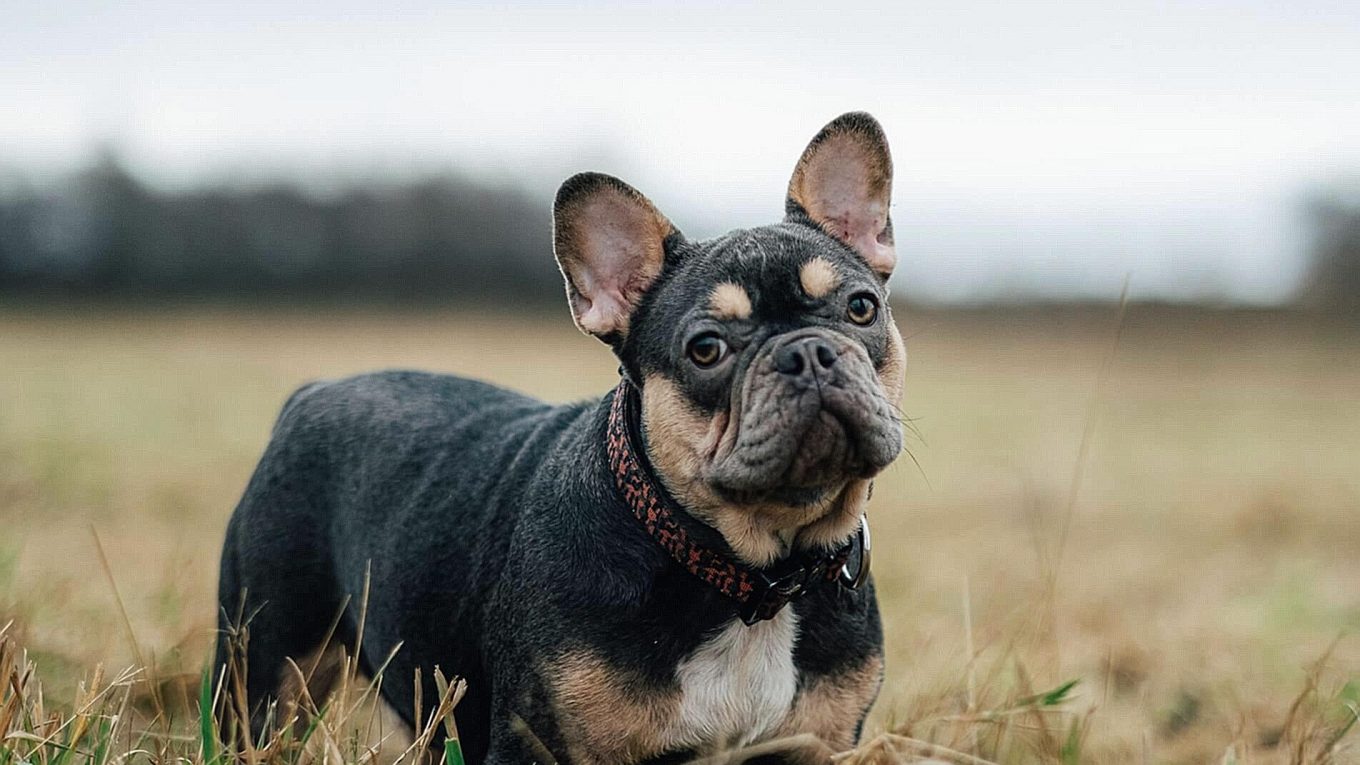Can French Bulldogs fly long flights?
Got a trip coming up and wondering if your French Bulldog can handle the long flight? No worries, you’re not alone. We all want our furry buddies by our side, but before you book that ticket, let’s get real about whether these adorable bat-eared cuties are cut out for air travel.
In this blog post, we’ll dive deep into the world of French Bulldogs and uncover the truth about their flying abilities. So grab a drink, get comfy, and join me on this informative adventure. Ready to take off? Let’s do it.
Physical Characteristics of French Bulldogs
Contents
- 1 Physical Characteristics of French Bulldogs
- 2 Challenges with Air Travel for Brachycephalic Breeds
- 3 Practical Considerations When Flying with French Bulldogs
- 4 Consult a Veterinarian Before Traveling
- 5 Choose a Pet-Friendly Airline
- 6 Book Direct Flights Whenever Possible
- 7 Provide a Comfortable and Secure Carrier
- 8 Offer Care and Attention During the Flight
- 9 Conclusion
French Bulldogs, also known as “Frenchies,” are beloved pets known for their small size, friendly nature, and irresistible charm. As a proud owner of a French Bulldog, it’s essential to understand their unique physical characteristics to provide them with the best care possible. In this article, we will explore the fascinating physical traits that make French Bulldogs so special.
Compact and Muscular Build:
French Bulldogs have a compact and muscular body that gives them a sturdy appearance despite their small size. With a broad chest and a strong bone structure, they exude strength and athleticism.
Square Head with Flat Face:
One of the most distinctive features of French Bulldogs is their square-shaped head and flat face. This adorable facial structure captures the hearts of many dog enthusiasts. Their short muzzle adds to their charm and gives them that irresistible “smushed” face look.
Bat-Like Ears:
French Bulldogs are famous for their unique bat-like ears. These medium-sized ears are wide at the base and rounded at the tips, adding to their overall cuteness. Whether standing erect or folded over slightly, their ears contribute to their unmistakable silhouette.
Short and Smooth Coat:
French Bulldogs have a short and smooth coat that comes in various colors, including brindle, fawn, cream, and pied. While their coat requires minimal grooming, regular brushing helps keep it healthy and reduces shedding.
Brachycephalic (Short-Nosed) Face:
A characteristic that sets French Bulldogs apart is their brachycephalic face shape. This means they have a short snout and a flat face. While undeniably adorable, it’s important to note that this feature can lead to respiratory difficulties, making it essential for owners to provide proper care and monitoring.
Potential Health Considerations:
Due to their unique physical characteristics, French Bulldogs are more prone to certain health issues. Brachycephalic breeds often experience respiratory problems and can be more susceptible to heat exhaustion. It is crucial to be aware of these vulnerabilities and provide a safe and comfortable environment for your Frenchie.
Challenges with Air Travel for Brachycephalic Breeds
Air Travel Challenges for Brachycephalic Breeds: What French Bulldog Owners Need to Know
If you’re a proud owner of a French Bulldog or another brachycephalic breed, you know that these dogs come with their own set of unique challenges. One area where these challenges can become particularly apparent is air travel. Flying with a brachycephalic breed like a French Bulldog requires careful planning and consideration to ensure the safety and well-being of your furry friend. In this article, we’ll explore the specific challenges that brachycephalic breeds face during air travel and provide insights and tips to help you navigate this process.
- Limited Airflow: One of the main challenges faced by brachycephalic breeds during air travel is the limited airflow through their narrower nasal passages. Unlike dogs with longer snouts, French Bulldogs have a harder time breathing efficiently. This can be even more difficult in the confined space of an airplane cabin, where the air quality may not be optimal. The reduced airflow can cause discomfort and stress for your dog, making long flights particularly challenging.
- Overheating Risk: Brachycephalic breeds like French Bulldogs have difficulty regulating their body temperature due to their shorter noses, which limits their ability to pant effectively. Panting is a dog’s natural way of cooling down, but for brachycephalic breeds, this mechanism is compromised. Combine high temperatures in the cargo hold or cabin with restricted airflow, and you have a recipe for overheating and potentially life-threatening conditions such as heatstroke.
- Respiratory Distress: The risk of developing respiratory distress or other complications is higher for brachycephalic breeds during air travel compared to dogs with longer muzzles. The stress caused by the unfamiliar environment, changes in air pressure, and temperature variations can exacerbate existing respiratory issues or trigger new ones. These challenges highlight the importance of careful consideration when deciding whether to fly with a brachycephalic breed like a French Bulldog.
- Airline Policies and Guidelines: In response to these challenges, many airlines have implemented specific policies and guidelines regarding the transportation of brachycephalic breeds. Some airlines may have restrictions on flying certain breeds altogether, while others may require additional documentation or health checks before allowing them on board. It’s crucial to research and choose an airline that has experience and understanding of the needs of brachycephalic breeds.
- Consult with Your Veterinarian: Before planning any air travel, it’s essential to consult with your veterinarian. A thorough health check-up can help determine if your French Bulldog is fit to fly and if any precautions need to be taken. Your vet can provide valuable insights and guidance based on your dog’s specific needs and health condition.

Practical Considerations When Flying with French Bulldogs
Flying with your French Bulldog can be an exciting adventure, but it’s important to take practical considerations into account to ensure a safe and stress-free journey for both you and your furry friend. Here are some key factors to consider before taking to the skies:
- Health and Well-being: French Bulldogs have a unique brachycephalic skull shape, which can make breathing more difficult for them, especially in stressful situations like flying. It’s crucial to consult with your veterinarian to assess if your French Bulldog is fit to fly and if any precautions need to be taken. They may recommend measures such as using a specifically designed airline-approved carrier or providing extra oxygen during the flight.
- Temperature and Climate: French Bulldogs are sensitive to extreme temperatures and can easily overheat or become too cold. It’s essential to research airline regulations regarding temperature restrictions and ensure that your French Bulldog will have access to temperature-controlled areas or proper ventilation during the flight. Additionally, consider the temperature at your destination and plan accordingly.
- Size and Weight Restrictions: Airlines have specific regulations regarding pet travel, including size restrictions for in-cabin carriers or weight limits for checked baggage. Make sure to check these guidelines before booking your flight and ensure that your French Bulldog meets the requirements. Some airlines may also have breed-specific restrictions or additional fees, so it’s important to be aware of these beforehand.
- Duration of the Flight: Long flights can be physically and mentally exhausting for French Bulldogs, especially if they’re not used to being confined for extended periods. Gradually acclimate your French Bulldog to travel crates or carriers before the flight, and provide plenty of exercise and mental stimulation before and after the journey.
- Documentation and Paperwork: Flying with a French Bulldog requires proper documentation and paperwork. This may include health certificates, vaccination records, and any other documentation required by the airline or destination country. Research and comply with all necessary regulations to avoid any issues or delays during your journey.
Consult a Veterinarian Before Traveling
Before you buckle up and take off, make sure to consult a veterinarian. As an expert in the field, I’m here to share why this is crucial for your furry friend’s well-being. Let’s dive in.
Brachycephalic Breeds and Air Travel:
French Bulldogs are part of the brachycephalic breed family, known for their adorable flat faces. However, this unique feature also poses challenges when it comes to air travel. These breeds are more prone to breathing difficulties, especially in stressful situations like flying.
Assessing Respiratory Health:
Your veterinarian will conduct a thorough examination of your Frenchie’s respiratory system. They’ll check factors such as nostril size and soft palate length, which directly impact breathing ability. This assessment helps determine if your Frenchie is fit for long flights or if alternate travel options should be considered.
Individual Health Considerations:
Every French Bulldog is unique, just like us. Each dog may have specific health concerns that need to be taken into account. Your veterinarian will consider factors like underlying medical conditions or age-related issues before giving their expert advice on air travel suitability.
Alternatives to Long Flights:
If your Frenchie has severe breathing issues, your vet may suggest alternative travel options like ground transportation or shorter flights. Their priority is to minimize any potential risks to your pup’s health while still ensuring you can enjoy your trip together.
Preparing for Air Travel:
Your veterinarian is your go-to source for guidance on preparing your Frenchie for air travel. They’ll provide recommendations on vaccinations, medications, and dietary changes leading up to the flight. Following their expert advice will help ensure a smooth and stress-free journey for your furry friend.
Choose a Pet-Friendly Airline
Bonjour. Are you ready to jet set with your adorable French Bulldog? Before you embark on your sky-high adventure, it’s crucial to choose a pet-friendly airline that understands the unique needs of our four-legged companions. Let’s dive into why doing thorough research is essential and explore some pawsome airlines known for their pet-friendly policies. Get ready for takeoff.
Why Research is Key:
- Not All Airlines are Created Equal: Just like dog breeds, airlines differ in their pet policies. Some may welcome our furry friends with open paws, while others might have strict restrictions or limited accommodations. Doing research ensures you find an airline that caters to your French Bulldog’s needs.
- Guidelines and Requirements: Pet-friendly airlines often have specific guidelines to ensure the safety and comfort of our pets. These may include size restrictions, crate specifications, and necessary documentation. By researching, you can ensure you meet all requirements and avoid any surprises at check-in.
Pet-Friendly Airlines:
- Delta Air Lines: This airline is known for its excellent pet policy, allowing small dogs like our lovable Frenchies to travel in the cabin as long as they meet size requirements. They even offer a dedicated pet travel program, Delta Cargo, for larger dogs.
- American Airlines: With their “Cuddle Class” program, American Airlines will make your Frenchie feel like a first-class traveler. They allow small pets in the cabin and provide extra attention and care throughout the journey.
- United Airlines: United understands that our furry friends are family too. They offer pet-safe programs, allowing small dogs in the cabin and larger dogs through their United PetSafe cargo service.
- JetBlue: JetBlue takes pride in being pet-friendly from nose to tail. They welcome small pets in the cabin and offer amenities like JetPaws pet carrier tags and a fun pet travel guide.

While this information is accurate at the time of writing, it’s always wise to directly contact the airline to confirm their pet policy. Policies can change faster than a French Bulldog chasing a ball.
Other Considerations:
When choosing the perfect pet-friendly airline, consider factors such as direct flights, layover durations, and overall customer reviews. A direct flight will minimize stress for your Frenchie, while shorter layovers ensure quick potty breaks. Reading customer reviews can provide insights into other travelers’ experiences with their pets on different airlines.
Final Thoughts:
Flying can be stressful for our furry friends, so it’s essential to prepare them adequately and ensure their comfort throughout the journey. Consult with your veterinarian before takeoff to address any health concerns and get personalized advice for your French Bulldog’s specific needs.
Book Direct Flights Whenever Possible
Layovers can be tiresome and overwhelming for both you and your French Bulldog. Having to change planes often means taking your furry friend out of their carrier, going through security again, and dealing with crowded airports. This can cause anxiety and exhaustion for your pet.
Minimize Risk of Mishandling:
During layovers or transfers, there is an increased risk of your French Bulldog getting lost or mishandled. By booking direct flights, you significantly reduce this risk and ensure that your pet remains safe and secure throughout the journey.
Reduced Travel Time:
Direct flights not only provide a more comfortable experience for your French Bulldog but also minimize overall travel time. This means less time spent in transit and more time enjoying your destination together.
Avoid Extreme Temperatures and Adverse Weather Conditions:
Another advantage of booking direct flights is that it minimizes the chances of your French Bulldog being exposed to extreme temperatures or adverse weather conditions during layovers. Temperature-controlled cargo holds in airplanes ensure that your pet’s environment remains comfortable throughout the journey.
In-Cabin Experience:
French Bulldogs are generally allowed to fly in-cabin due to their size and breed characteristics. Booking a direct flight increases the likelihood of being able to bring your furry friend with you in the cabin, where they can stay close to you and experience less anxiety.
Provide a Comfortable and Secure Carrier
Traveling with your French Bulldog can be an exciting adventure, but ensuring their comfort and safety during long flights is of utmost importance. In this comprehensive guide, we will discuss the key factors to consider when choosing a carrier for your furry friend. By following these expert tips, you can provide a comfortable and secure travel experience for your French Bulldog.
Size and Dimensions:
When selecting a carrier, it is crucial to choose one that allows your French Bulldog to move comfortably. Look for carriers that provide ample space for them to stand, turn around, and lie down in a natural position.
Material and Durability:
Opt for carriers made from durable materials that can withstand the rigors of travel. Hard-sided carriers offer better protection, while soft-sided carriers are more flexible and easier to carry.
Ventilation:
Ensure that the carrier has proper ventilation to provide fresh air flow throughout the flight. Look for carriers with mesh panels or openings that allow for optimal airflow.
Security Features:
To prevent any accidental escapes during the flight, select a carrier with secure latches or zippers. It is essential to keep your French Bulldog safely inside the carrier at all times.
Additional Comfort:
Consider adding extra padding or bedding inside the carrier to provide additional comfort for your French Bulldog. This will help cushion any bumps or turbulence during the flight.
Acclimate Your French Bulldog:
It is recommended to familiarize your French Bulldog with the carrier before the actual flight. Gradually introduce them to the carrier by placing their food, toys, or treats inside it. This helps create positive associations and minimize anxiety during travel.
Labeling and Identification:
Ensure that the carrier is clearly labeled with your contact information. Include your name, phone number, and address to facilitate easy identification in case of any mishaps or lost luggage.
Check Airline Requirements:
Always check with the airline regarding their specific requirements for pet carriers. Each airline may have different guidelines regarding carrier size, weight restrictions, and safety measures. Adhering to these guidelines will ensure a smooth travel experience for both you and your French Bulldog.
Offer Care and Attention During the Flight
French Bulldogs, with their adorable flat faces and unique respiratory system, require special care and attention during flights. Here are some tips to ensure their comfort and well-being while soaring through the skies.
Choose the Right Travel Crate
When traveling with a French Bulldog, it’s crucial to provide them with a travel crate or carrier that meets airline regulations. Opt for a spacious and well-ventilated crate that allows your furry friend to stand, turn around, and lie down comfortably. This will help alleviate any feelings of confinement or anxiety during the flight.
Familiarize Your Frenchie with the Crate

Before the flight, gradually introduce your French Bulldog to the travel crate. Make it a positive and safe space by placing their favorite toys, blankets, or treats inside. This will help them feel more at ease when it’s time to board the plane.
Regular Check-Ins and Reassurance
During the flight, make sure to check on your French Bulldog regularly. Talk to them in a calm and soothing voice to provide reassurance and help reduce any stress or anxiety they may be experiencing. Remember, your presence can make a world of difference to your furry companion.
Hydration and Nutrition

Offer small amounts of water and snacks during the flight to keep your French Bulldog hydrated and nourished. However, be mindful not to overfeed them as this can lead to discomfort or digestive issues. Pack some of their favorite treats or a collapsible water bowl for easy access.
Direct Flights are Best
Whenever possible, book a direct flight for your French Bulldog to minimize travel time and reduce stress levels. Layovers or multiple flights can increase anxiety for your furry friend, so opt for the most direct route available.
Temperature Considerations
French Bulldogs are sensitive to extreme temperatures, so it’s important to ensure they are not exposed to excessive heat or cold during the flight. Check with the airline for any specific temperature regulations and consider packing a cooling pad or blanket for added comfort.
Know the Airline’s Pet Policies
Different airlines may have specific regulations and requirements for traveling with pets, including French Bulldogs. Familiarize yourself with these policies before booking your flight to ensure a smooth and hassle-free journey for both you and your furry friend.
Conclusion
In conclusion, it is not recommended for French Bulldogs to fly on long flights.
These adorable little dogs may struggle with the physical and environmental challenges that come with air travel. The combination of their short snouts and potential breathing difficulties make them more susceptible to stress and discomfort during flights.
Remember, the safety and comfort of our furry friends should always be our top priority.




